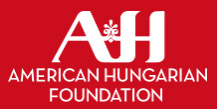William Penn Life, 2017 (52. évfolyam, 1-12. szám)
2017-06-01 / 6. szám
Tibor's Take with Tibor Check, Jr. A FEW MONTHS BACK, my parents and brother András II visited Hungary for three weeks. The first part of the journey was confined to the Budapest and Szentendre areas. The second segment was spent with our dear, sweet cousins in Csőt where the Easter holiday and birthdays for my father and cousin Szófia were celebrated. It's quite the coincidence that the (nearly) oldest and youngest members of our extended family would share April 14 as the date they entered the world. You see, when my entire family last visited Hungary in 2014, our cousins Géza and Judit announced on our last night in Hungary that they were expecting, and the doctor thought the impending arrival would be sometime in April. My father declared: "The baby will be bom on April 14, which is my birthday!" We all laughed and continued to celebrate our last night together. As the months passed, we were kept abreast of the pregnancy. Around Christmas 2014, we learned the baby would be a girl, and that the doctor was now predicting a late March arrival. My dad, however, kept insisting the big day would be April 14. I have commented before that my father has a sixth sense. There is no rhyme or reason to his insights, and they come and go like a swallow on a warm spring morn. Thus, on April 14,2015, we received a brief email from cousin Géza that baby Szófia was born a few minutes past the stroke of midnight that morning. Judit had spent 14 hours in labor and the doctor thought the baby would arrive around 9:00 p.m. the night before. But, father's prediction became a fact. When my family returned to Hungary earlier this year, my sister and I were not part of the trek due to a combination of career and personal factors. This was unfortunate as their trip included many "bucket list" items that were of particular interest to me. Around the middle of February, I decided to develop a user-friendly way for my family to record the trip. I referred to this documentation as the "Cseh 2017 Virtual Reality Visit to Hungary." I first thought it would be a neat way to save for posterity the events, sights and sounds of the trip, but after further contemplation, the idea of making available for immediate viewing certain segments of this particular adventure as they were taking place intrigued me more. I wanted to feel as if I was a part of the action. My idea was to transmit live images while saving those images in a simple and inexpensive manner. I thought this system may be of interest to some WPA members. So, here is my method to record and send via the internet live excerpts of a trip to loved ones thousands of miles away. First, you want to record your trip utilizing the most reliable cell phone camera you have. Make sure you clear out old photos, as you will want to have as much available storage space as possible. You can load a lot of photos (képek, in Hungarian) on your cell, but recording video wipes out a lot of memory. I suggest using a separate device for extensive video recording. My mother arranged a package deal which included three cell phones with 100 minutes of videos/calls and 100 texts per phone at a total price of about $75. They had to keep tabs on their usage as anything beyond the pre-paid limits would incur a hefty surcharge. The phone app did have a monitoring system that made it easy to track usage. During their stay, they sent me several short live videos of Szt. Mátyás, Palm Sunday Services at Szt. István Basilica, the Easter Market next to Gerbeaud, and dining at the Mátyás Pince/Százéves Étterem in Budapest. It was really neat to see on my cell Vilmos Lakatos performing "Szomorú Vasárnap" or Louis Sarkozy playing on his hegedű "Pacsirta." My father brought along his digital camera to record photos and video. He used a 64GB SD card, so plenty of recording time was available. My brother András II brought along a small high-quality digital audio recorder to save music and conversation. It is wise to have plenty of backup recording devices, so if one system fails or becomes disabled, others can be used. Bring along plenty of batteries and extra SD cards. Remember to stow your batteries and laptops in your checked luggage. When returning home, put your recorded SD cards in a protective wallet. Airline officials say they do not use scanning equipment that can erase your precious memories, but there are cases where more sensitive detecting equipment has been used, and that equipment can erase digitally encrypted information. I still wanted something for my parents and brother to use to transmit the many family events taking place in Csőt, a small town of 1,200 that maintains a village-wide version of WiFi (pronounced "wee-fee" in Hungary). I purchased for them two Kindles. My thoughts were that they could be used simultaneously to translate the activities in both English and Hungarian using Google Translate. This "twin Kindle" approach solved 99% of our communication difficulties. When using translation software, always remember to write your English words as simply as possible. Avoid acronyms, slang expressions, figures of speech and flowery adjectives/adverbs as each of these translate poorly. I learned that if a word written in English shows up the same in the Hungarian translation, more than likely that word that was either misspelled or is not part of the Hungarian lexicon. Remember, too, that a typical Kindle charge lasts about 6 hours under high useage. Make sure to bring along the necessary 110/220 volt conversion accessories. 8 0 June 2017 0 WILLIAM PENN LIFE It’s almost like being there
